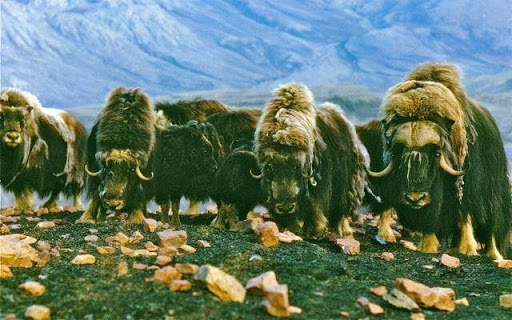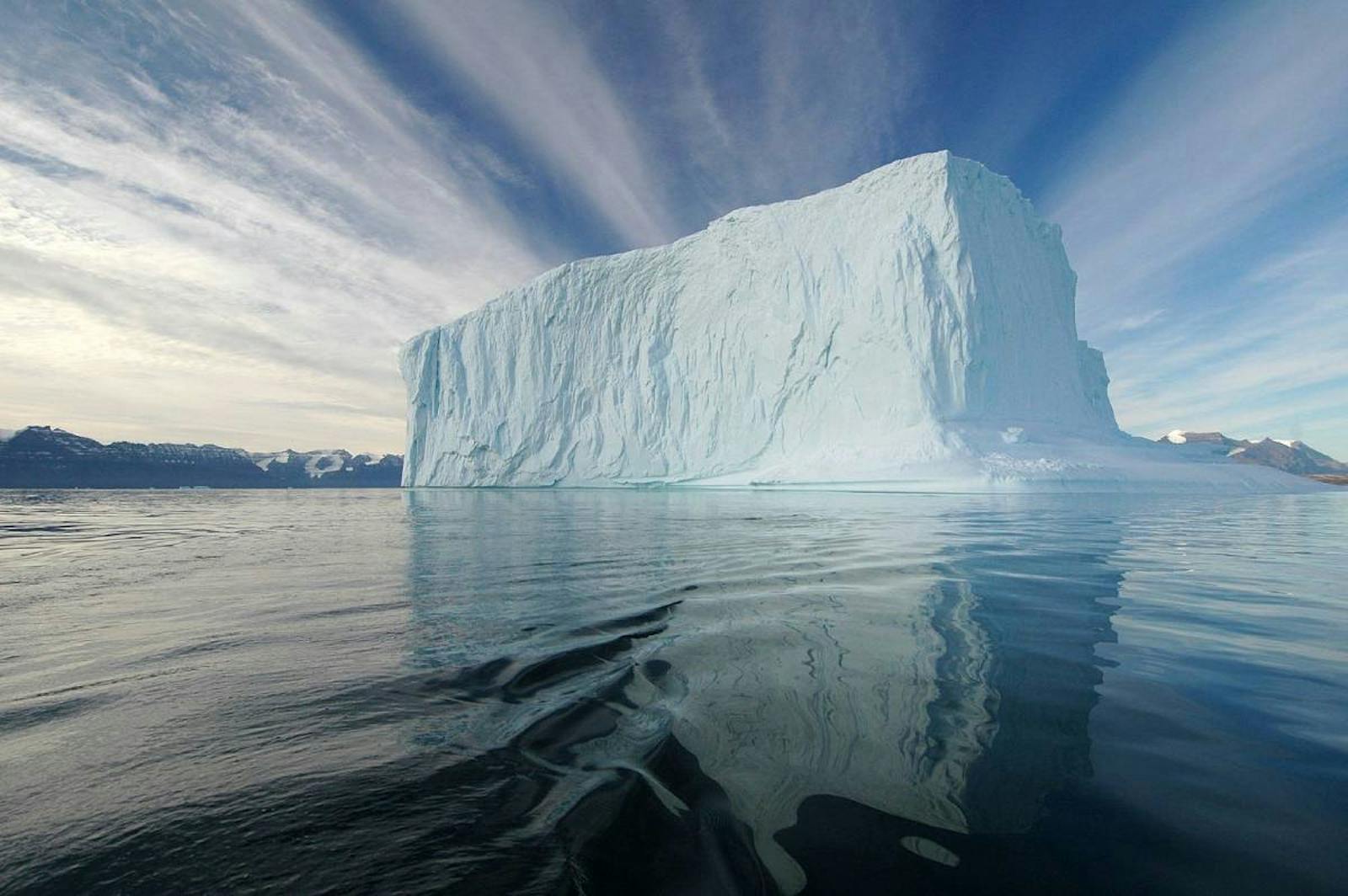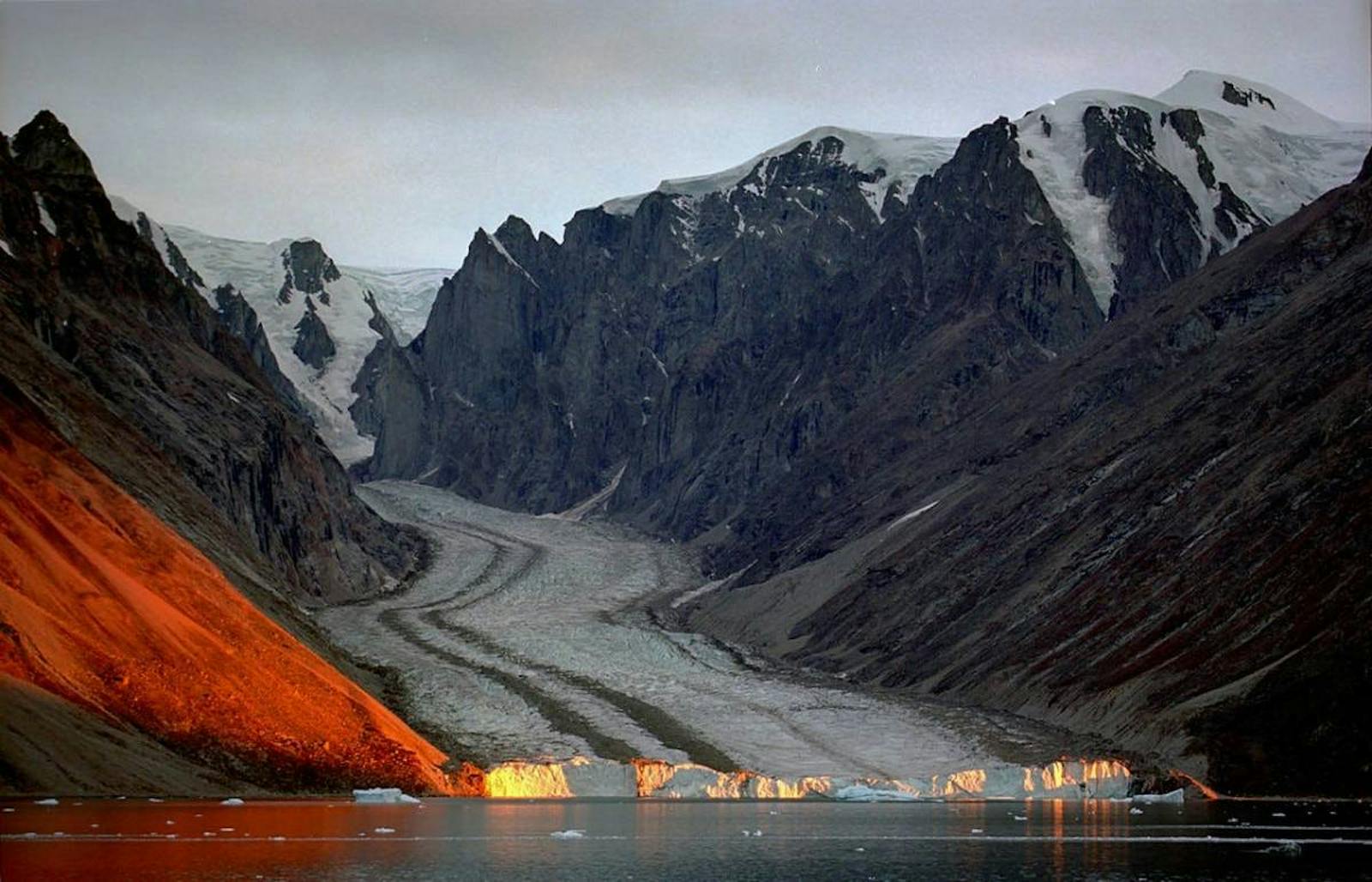Kalaallit Nunaat High Arctic Tundra
The ecoregion’s land area is provided in units of 1,000 hectares. The protection goal is the Global Safety Net (GSN1) area for the given ecoregion. The protection level indicates the percentage of the GSN goal that is currently protected on a scale of 0-10.
Bioregion: Greenland (NA1)
Realm: Subarctic America
Ecoregion Size (1000 ha):
14,833
Ecoregion ID:
418
Conservation Target:
81%
Protection Level:
10
States: Denmark: Greenland (Kalaallit Nunaat)
With 75–80% of its surface covered by the Earth’s second-largest ice cap, Greenland has limited ice-free area and only two ecoregions, the more southern Kalaallit Nunaat Arctic Steppe and the northern Kalaallit Nunaat High Arctic Tundra. The Kalaallit Nunaat High Arctic Tundra is the most northern land on the planet. Only the most cold-hardy plants and animals are able to survive in this forbidding area.

The flagship species of the Kalaallit Nunaat High Arctic Tundra is the northern collared lemming (Dicrostonyx groenlandicus). Image credit: Don Reid/Wildlife Conservation Society
This ecoregion wraps around the top of Greenland, including the upper half of the west coast and the upper one-third of the east coast. The western portion of this ecoregion lies as close as 25 km to Canada’s Ellesmere Island, across the Nares Strait.
This ecoregion is younger geologically than southern Greenland and has mostly Paleozoic bedrock. The terrain is less mountainous than southern Greenland, but has rolling hills, for example at Peary Land in the northeast, which has the most extensive ice-free area and is the most northern ice-free region on Earth.
Most of the Northeast Greenland National Park, at 972,000 km2 and the world’s largest national park, lies within this ecoregion. The park covers 81 percent of the ecoregion, and 16% of the area outside this park (the only protected area in the ecoregion) is still intact. The ongoing melting of the ice cap, however, will have profound and unpredictable consequences for this ecoregion's biota.
.jpg)
Arctic fox. Photo | Dreamstime_51496224
The climate of this ecoregion is high Arctic, also called polar desert, with brutal winters and summer temperatures that rarely surpass 5°C. However, occasional dry Föhn winds blow down from the ice cap to the coast, raising temperatures by 10–20°C and melting snow. These winds expose vegetation and are beneficial to herbivores such as reindeer and musk ox. Precipitation is generally 25–200 mm annually, decreasing inland.
Plants that survive in this environment must be adapted to extreme cold and aridity and be able to survive for months without sunlight. These plants include such striking wildflowers as sulphur-colored buttercup, alpine foxtail, and nodding lychnis, which generally do not occur in southern Greenland. The willow scrub, low birch forest, and herb slopes of southern Greenland are absent here, replaced by low heath, fellfield, and snow.
During warm periods over the last two million years, trees such as black spruce, birch, arbor vitae (northern white cedar), yew, and the now-extinct Greenland larch grew in the northern reaches of this ecoregion, but today the most southern part of the ecoregion features dwarf shrub heathland or grassland.

Musk oxen
The heathland is dominated by white Arctic mountain heather, Arctic willow, alpine blueberry, or dwarf birch. Grasslands, which dry out in summer, have wideleaf polargrass, Bigelow’s sedge, shortleaved sedge, and narrowleaf cottongrass. Other plants dominate snowbeds, fellfields, and organic crusts.
The most northern parts of the ecoregion are the driest as well as the coldest. The wetter coastal areas have a dense cover of mosses and lichens, as well as heath and fellfield vegetation. Dry interior areas may lack vegetation entirely or have mountain avens heath, steppe vegetation, or sedge meadow.
Nine species of terrestrial mammals occur in Greenland—Arctic fox, Arctic wolf, polar bear, wolverine, reindeer (caribou), musk ox, ermine, Arctic hare, and northern collared lemming. (Polar bear can also be listed as marine). This ecoregion has them all, whereas several species were blocked by ice from dispersing to southern Greenland. Around 40 percent of the global population of musk ox inhabit Northeast Greenland National Park.

Gyrfalcon. Image credit: Creative Commons, Olafaur Larson
Marine mammals include Atlantic walrus, bearded seal, harp seal, ringed seal, narwhal, and beluga whale. Summer breeding birds include great northern diver, barnacle goose, pink-footed goose, common eider, king eider, gyrfalcon, snowy owl, sanderling, red knot, rock ptarmigan, and common raven.
Although Greenland’s human population has always been small, over-hunting has led to serious declines of some native species. Some large mammals were hunted nearly to extinction during the 19th and early 20th centuries. Subsistence hunting is now managed more carefully. However, climate change and oil production are now major threats.
Priority conservation actions for the next decade:
- Prohibit incompatible uses such as oil production and use of motorized vehicles within designated protected areas.
- to the extent possible, mitigate impacts of climate change on species and natural communities.
- Protect vulnerable species such as the Arctic wolf from hunting and manage prey populations to prevent over-population and deleterious impacts on vegetation.
-
-
1. Kalaallit Nunaat High Arctic Tundra. https://www.worldwildlife.org/ecoregions/na1112
2. Northeast Greenland National Park. https://en.wikipedia.org/wiki/Northeast_Greenland_National_Park
3. Böcher, J., and J.M. Petersen. 1997. Greenland. Pages 685-720 in F.E. Wielgolaski, ed. Ecosystems of the World: Polar and Alpine Tundra. Elsevier Science. -
Cite this page: Kalaallit Nunaat High Arctic Tundra. Ecoregion Snapshots: Descriptive Abstracts of the Terrestrial Ecoregions of the World, 2021. Developed by One Earth and RESOLVE. https://www.oneearth.org/ecoregions/kalaallit-nunaat-high-arctic-tundra/
-




